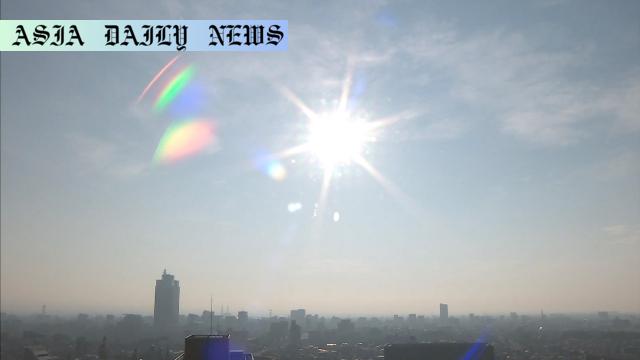Heatwave impacts Japan as mercury hits 41°C, prompting alerts across 44 prefectures for extreme conditions.
- Heatwave across Kanto and Kinki regions with temperatures exceeding 41°C.
- Heatstroke alerts issued for 44 prefectures in Japan.
- Residents advised to stay cool, hydrated, and avoid outdoor activities.

Unprecedented Heatwave Puts Japan on High Alert
Japanese authorities are currently bracing for an intense heatwave that has gripped the nation, with temperatures expected to soar as high as 41°C in select parts of the country. Following readings of 40.3°C in Komatsu, Ishikawa Prefecture on Monday, the Japan Meteorological Agency has issued a warning for another blazing day, particularly in the Kanto and Kinki regions. The mercury is predicted to rise to life-threatening levels of 40 degrees in cities like Maebashi in Gunma Prefecture and Kumagaya in Saitama Prefecture. Temperatures of 38 to 39 degrees are anticipated in several other locations including Chichibu, Kofu, Mito, and Utsunomiya.
Authorities are deeply concerned about the risks posed by such extreme heat, which has led to widespread heatstroke alerts. 44 out of Japan’s 47 prefectures, covering a majority of the country from the northern Tohoku region to the southern prefecture of Okinawa, are under alerts. Cities like Tokyo, Takamatsu, Okayama, and Oita are also preparing to endure sweltering conditions of up to 37°C.
Heatstroke and Precautions During Extreme Weather
The Japan Meteorological Agency is urging citizens to take necessary precautions to prevent heatstroke and other heat-related illnesses. Residents are advised to stay indoors during the hottest parts of the day, use air conditioning where available, and consume ample water and salt to stay hydrated. Outdoor activities should be minimized or avoided, and individuals are encouraged to take frequent breaks if staying outside is unavoidable.
Experts also highlight the importance of community vigilance during such conditions, encouraging residents to check on elderly neighbors and those with limited access to adequate cooling facilities. Public health campaigns across the affected regions have been reminding citizens of the dangers of overexposure to high temperatures.
The Broader Impact of Climate Trends
Japan’s prolonged summers and recent record-breaking heat events are raising concerns among environmental scientists and policymakers about the ongoing trend of global warming. The frequency of extreme heat events worldwide, including Japan’s current predicament, is a sobering reminder of the urgent need for concerted efforts to mitigate the impacts of climate change. Urban centers are particularly vulnerable due to what is known as the urban heat island effect, where densely populated areas trap additional heat due to concrete infrastructure and limited green spaces.
The ongoing crisis calls for a reassessment of both immediate and long-term strategies to combat rising temperatures. Innovative urban planning, increased tree cover, and sustainable lifestyles are essential measures for building resilient communities in the face of frequent extreme weather events.
Looking Ahead: The Need for Preparedness
As heatwaves become a more common occurrence, both on the national and global stage, preparedness and awareness among citizens play a critical role in reducing risks. Monitoring weather updates, understanding heat-related symptoms like dehydration and fatigue, and using government resources, such as air-conditioned public facilities, are effective measures to ensure safety. Continued collaboration between local governments, environmental bodies, and residents also holds promise in adapting to and alleviating the dangers of extreme heat.



Commentary
Reflecting on the Urgency of Japan’s Heatwave
The ongoing heatwave in Japan is a stark reminder of how weather extremes are becoming increasingly normalized in various parts of the world. Temperatures surging to an overwhelming 41°C, as reported in the Kanto and Kinki regions, not only pose a health risk but also underscore broader environmental challenges. It is particularly alarming to see heatstroke alerts imposed on 44 prefectures, demonstrating just how widespread the issue has become.
Connectivity Between Local Events and Global Trends
While this is an immediate concern for Japan, it also resonates as part of a larger global narrative regarding climate change. Episodes of extreme weather, whether heatwaves, flooding, or hurricanes, often send a clear message about the urgent state of our planet. The urban heat island effect, seen prominently in cities like Tokyo, highlights not just a climatic phenomenon but also an opportunity to rethink how we design our cities moving forward.
Actionable Steps Moving Forward
Ultimately, grappling with such conditions demands a dual perspective—one for immediate mitigation and another for sustainable prevention. Japan’s efforts to issue alerts and encourage precautionary steps show remarkable leadership in safeguarding vulnerable populations. However, long-term action is equally crucial. Governments, businesses, and communities globally must align their efforts in addressing the root causes of climate change while fostering initiatives for renewable energy adoption, eco-conscious infrastructure, and green urban planning.
A Call for Awareness and Resilience
The current heatwave is as much a call for individual mindfulness as it is for systemic changes. Events of this scale require proactive adaptation, civic responsibility, and environmental awareness. By staying informed and prepared, while advocating for coordinated climate action, humanity can navigate through these challenges towards a more sustainable coexistence with nature.